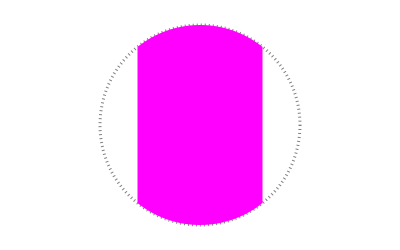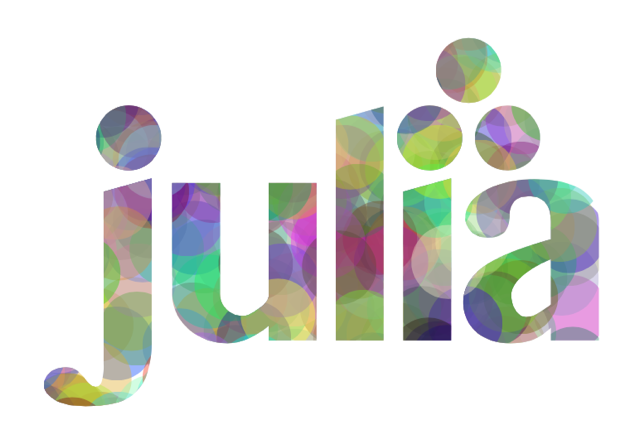Clipping
Use clip() to turn the current path into a clipping region, masking any graphics outside the path. clippreserve() keeps the current path, but also uses it as a clipping region. clipreset() resets it. :clip is also an action for drawing functions like circle().
sethue("grey50")
setdash("dotted")
circle(O, 100, :stroke)
circle(O, 100, :clip)
sethue("magenta")
box(O, 125, 200, :fill)
Luxor.clip — Function.clip()Establish a new clipping region by intersecting the current clipping region with the current path and then clearing the current path.
Luxor.clippreserve — Function.clippreserve()Establish a new clipping region by intersecting the current clipping region with the current path, but keep the current path.
Luxor.clipreset — Function.clipreset()Reset the clipping region to the current drawing's extent.
This example uses the built-in function that draws the Julia logo. The clip action lets you use the shapes as a mask for clipping subsequent graphics, which in this example are randomly-colored circles:

function draw(x, y)
foregroundcolors = Colors.diverging_palette(rand(0:360), rand(0:360), 200, s = 0.99, b=0.8)
gsave()
translate(x-100, y)
julialogo(action=:clip)
for i in 1:500
sethue(foregroundcolors[rand(1:end)])
circle(rand(-50:350), rand(0:300), 15, :fill)
end
grestore()
end
currentwidth = 500 # pts
currentheight = 500 # pts
Drawing(currentwidth, currentheight, "/tmp/clipping-tests.pdf")
origin()
background("white")
setopacity(.4)
draw(0, 0)
finish()
preview()